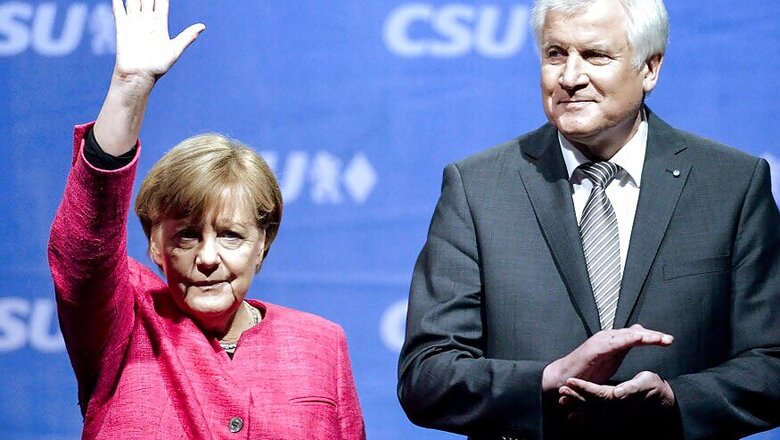
views
Berlin: If popular Chancellor Angela Merkel faced a US presidential-style vote, she would almost certainly win by a landslide – but things are not so simple under Germany's complex election system.
In the end, her conservatives may be forced into torturous coalition haggling, possibly with their biggest campaign rivals, to stay in power and secure Merkel a fourth term.
The reason is post-war Germany's election system which mixes the "winner-takes-all" approach of Britain and the United States with the proportional representation system that allows for more small parties.
THE SIMPLE FACTS
A total of 61.5 million people over the age of 18 are eligible to vote for the next government of the European Union's most populous nation and its biggest economy. Women voters outnumber men by 31.7 million to 29.8 million.
Voter participation four years ago stood at 71.5 percent, up slightly from 2009 and higher than in many other Western democracies.
When German voters enter the polling booth, they make two crosses on the ballot paper – one for a direct representative in their local district, the other for their preferred political party.
FIVE PERCENT HURDLE
The first vote is meant to ensure that each of Germany's 299 districts is represented in the Bundestag, the lower house of parliament.
In the second – and in many ways crucial – vote, citizens chose a party.
Ahead of election day, the parties write up their "candidate lists" in each of the 16 states. The names at the top have the biggest chance of getting a seat.
The party with the most votes then gets to send the most lawmakers to the lower house.
For example, if a party scores three direct seats through the first vote but is eligible for 10 seats overall through the second vote, seven more names on the party's state are also given seats.
A complication arises when the direct and party votes are out of balance because voters "split" their ballot.
When a party earns more direct seats than it is entitled to through its share of the party vote, it is granted the extra seats anyway. These are called "overhang" seats.
As a result, the size of the Bundestag can expand far beyond its minimum size of 598 seats. After the 2013 election, the chamber had 630 lawmakers – a figure which could even grow larger.
Parties which score below five percent of the second vote stay out of parliament altogether. This is meant to prevent excessive political fragmentation and stop potentially extremist parties.
Both the pro-business Free Democrats and the rightwing populist Alternative for Germany are expected to win seats this time after falling short of the bar in 2013.
Once polling booths close at 1600 GMT on Sunday, the question will be whether any alliance of parties has an absolute majority to elect a chancellor – half of all the lower house seats plus one.
2013 RESULTS
Christian Democratic Union (CDU) / Christian Social Union (CSU): 41.5 percent - 309 seats
Social Democratic Party (SPD): 25.7 percent - 193 seats
Die Linke: 8.6 percent - 64 seats
Greens: 8.4 percent - 63 seats
Free Democrats (FDP): 4.8 percent - 0 seats
Alternative for Germany (AfD): 4.7 - 0 seats
Plus 1 independent MP



















Comments
0 comment